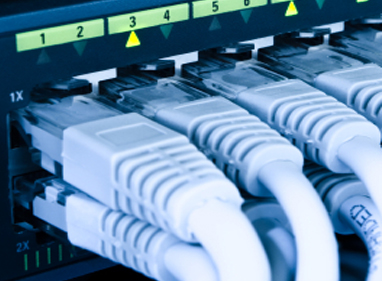

If you have more than one computer you are going to want a network - chances are you already have one. Networks vary in size and type, from small office to nationwide, from wired to wireless, but the core requirements are still the same: fast, reliable and secure.
If you are moving into new premises then the network points are probably not exactly where you want them to be. We can move network points and add additional sockets for both computers and telephone systems. We can also extend existing networks by adding more data cabling or providing a wireless connection to an existing wired network.
Here at Mamu Computing we can provide the full package, supplying all necessary hardware and software including cable installation, full wireless coverage, patch panel setup and network security. We can provide you with a network that suits your situation and needs, so whether you are moving into new premises or just want to improve your existing network, give us a call to discuss your network.
| Unsure of some of the terms we've used? We've handpicked a few definitions for you below, or you can visit our glossary for a comprehensive list. Click on 'read more' to see the full definition. | |
| Access Point: Access points provide access to wireless internet facilities. Usually access points are a more dedicated system than a simple router set-up, with access points used to extend wireless coverage across a large area from a wireless router or t... read more | |
| ADSL: ADSL, or 'Asymmetric Digital Subscriber Line', is a method of transferring data over telephone lines. In the UK, this is the most common way of connecting to broadband internet, with the alternatives being DSL (cable internet) or mobile int... read more | |
| Bandwidth: Bandwidth refers to the amount of data that is transferred through a network or over an internet connection, which is measured in bits per second. The higher your bandwidth is, the more data that can be transferred, so a high bandwidth woul... read more | |
| Cloud Computing: Cloud computing refers to various online services, particularly the ability to store, edit and retrieve your files online by using online data storage. The 'cloud' refers to the internet, representing the network of online services, and any... read more | |
| Ethernet: Ethernet is a collection of computer network technologies that are used in almost all local area networks (LANs). This is almost certainly the network technology you are using at home or at work. Standard speeds are 10, 100 and 1000 Mbps (m... read more | |
| Fibre Optic Cable: Fibre optic cables are cables that use filaments of glass to transfer data using light. This makes data transfer extremely fast - as fast as the speed of light - but the cables are expensive and can be easily broken, meaning that they usual... read more | |
| Internet Protocol (IP): Whilst most people refer to 'IP' as meaning their 'IP address', it actually means the standard set of rules for sending and receiving data through the internet and is the primary protocol that establishes the internet. It is also the most c... read more | |
| LAN: LAN stands for Local Area Network, and is pronounced as 'Lan' rather than 'L-A-N'. A LAN is a network that is limited in size, usually within a business, school, university or house. LANs can be wired (using Ethernet) or wireless, using hig... read more | |
| WAN: A Wide Area Network (WAN) is network that spans across metropolitan, regional, or national boundaries and is often used by large businesses and government organisations. By definition the internet is a WAN, although a publicly accessible WA... read more | |
| WiFi: Wi-Fi is a popular technology that allows devices to wirelessly connect to networks, including the internet. Wi-Fi is a trademarked term that technically only refers to a specific wireless connection; however, the term has become popularly ... read more |